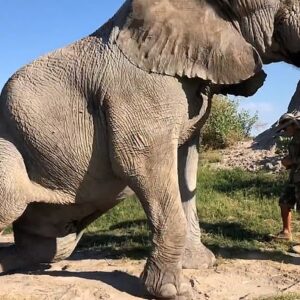Photographer Chris van Wyk became really popular online with his photos of a Mary River turtle covered in green algae, making it look like a punk rocker. His pictures got a lot of attention in the news and on social media, and this attention made people think more about protecting the place where these turtles live.
The Mary River turtle is special because it breathes through its bottom, which is why it’s sometimes called the “bum-breather.” Image credit goes to Chris van Wyk.
The famous Mary River turtle lives in the Mary River in Queensland, Australia. It’s special because it can breathe underwater using special glands in its reproductive organs, so it can stay underwater for up to 72 hours. This is unusual for a reptile, so people call it the “bum-breather.”
In 2009, the government in Queensland wanted to build a dam at Traveston Crossing on the river. This would have split the area where the Mary River turtle lives and destroyed where it usually lays its eggs.
This upset van Wyk, who was learning photography at the time. So, he decided to do something. He spent a whole day in the cold river wearing a wetsuit, taking lots of bad photos. His limbs even went numb and turned blue from the cold.
But then, he got lucky. He found a turtle with green algae “hair” like a mohawk. This was the perfect subject for a picture to show people why it’s important to protect these turtles.

After trying all day to get a good picture of the animal without success, the photographer finally saw it sporting a mohawk hairstyle. This unique find made it a great subject for raising awareness to protect its species. Chris van Wyk took the photo.
Excited by the outcome, van Wyk shared the pictures in local newspapers and on social media, hoping to spread them far and wide. Campaigners fighting against the dam then reached out to him, asking to use the images for postcards and posters to raise awareness. Eventually, one of the photos became really popular online.
Finally, the Queensland government’s plan to build the dam was stopped by federal environment minister Peter Garrett. The decision was announced alongside the viral photo. This meant that, at least for a while, the species was safe from harm.

The proposed site for the Traveston Crossing Dam is exactly where the Mary River turtle lives. Patrick McCully took the photo.
These turtles were almost wiped out before because people didn’t know they existed. In the 1960s and ’70s, they were sold as pets all over Australia, but nobody knew where they came from. They were called “penny turtles.” The river where they live was being damaged by things like farming and mining, which made it hard for them to survive.
A man named John Cann realized that the turtles being sold as pets were a new species that scientists didn’t know about. He spent twenty years looking for them in different rivers in Australia and Papua New Guinea because the people selling them wouldn’t say where they got them from.

For about twenty years, Mary River turtles were commonly known as “penny turtles” and were almost driven to extinction due to their widespread sale.
This situation changed in 1984 when the Victorian government implemented a ban on the sale of freshwater turtle hatchlings with a shell length less than 100 mm. This ban effectively halted the harvesting and trading of Mary River turtles. Consequently, there was no longer a need for wildlife traders to conceal the origin of these turtles.
John eventually traced the species back to the town of Maryborough, where their habitat could be found. This marked the first time the turtle was saved from extinction.

Can the rebellious Mary River turtle endure? The responsibility lies with us. Image credit: Chris van Wyk.
The struggle to protect the Mary River turtle persists. While it has been rescued from the harm of the dam, its long-term survival remains uncertain. There’s still much work ahead before we can confidently declare that this unique turtle species will thrive.





